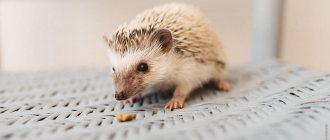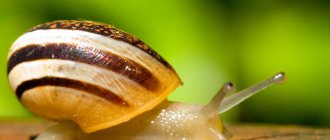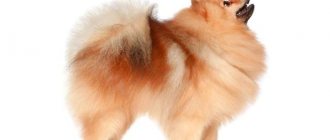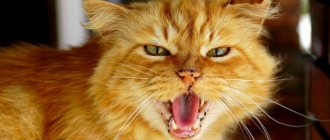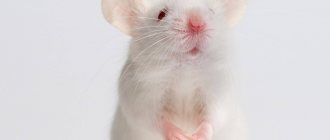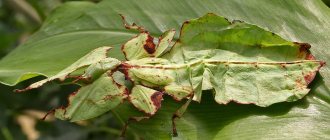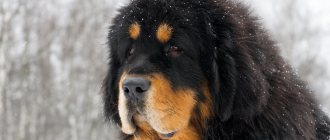Red fish is now the name given to delicious fish belonging to the salmon or sturgeon family. Types of red fish such as trout, salmon, pink salmon, chum salmon, and sturgeon have reddish or white-pink muscle tissue. Because of this, they received such a name.
Previously, only the sturgeon family was classified as red fish: sterlet, sturgeon, beluga, stellate sturgeon, etc. Currently, the salmon family is also included here.
Salmon fish has small bones and juicy muscle tissue, and caviar is an expensive delicacy. All types of red fish are highly valued in cooking.
Main characteristics of the family
The sturgeon family has an elongated and spindle-shaped body. Along the entire length of the body, on the upper part, there are longitudinal rows of bugs - bone scutes. There are five of them in total: one dorsal, a pair of lateral and a pair of ventral.
The head is covered with bony plates. The spatulate, elongated snout has a conical shape. The mouth is located on the bottom of the head and can be extended. There are lips, but no teeth. A characteristic feature is the small antennae that are located above the mouth.
Fins: a pair in front, near the head, one anal, one dorsal and a large tail. The base of the caudal fin is covered with diamond-shaped scales. The first pair of front fins are modified and look like spikes.
The sturgeon skeleton is cartilaginous. Fish have a swim bladder, four pairs of full gills and one pair of accessory gills.
This family of fish prefers to stay close to the bottom and feeds mainly on small fish, shellfish, insect larvae, and worms.
All species of the family are freshwater, anadromous or semi-anadromous.
Description of appearance
The main feature of the fish is its warty fat formations. Orandas do not have a specific color - a variety of variations are possible. There are fish with a predominance of red, black, blue, as well as their various combinations.
An interesting combination of a completely white body with a red-orange “pompom” located on the head. For some, the fatty growth resembles a flower, for others it resembles tangerine slices - each viewer has their own associations.
Other features of the appearance of the red riding hood:
- The body is shortened. The shape resembles an ellipse.
- On average, the length of the fish reaches 15-20 cm. Some specimens grow up to 25 cm.
- The body has an unpaired dorsal fin. And the long tail limb makes up about 70% of the body. All fins are elongated and transparent.
- The tail fins are forked. And they have rounded blades.
Thanks to its bright and contrasting color, the fish with a red growth has become the most popular variety of oranda.
Classification
The sturgeon family belongs to the class of ray-finned fish and to the order Sturgeon. Currently, there are only four species: shovelnose, pseudoshovelnose, beluga and sturgeon.
Species of the sturgeon class are common in the basins of the Azov, Black and Caspian seas. Sturgeon are also found in the Aral Sea basin, but they are represented by only one species. This is a thorn.
Representatives of the classes differ significantly from each other.
Shovelnoses get their name because of the unusual shape of their snout. They have small eyes that can be almost atrophied, but they have a well-developed sense of touch. This fish lives in reservoirs with a very fast flow of water, so an important feature is the presence of large bony plates that look like a shell. And the flat, elongated snout helps the shovel-nosed fish to easily stay afloat in a turbulent water flow.
Shovelnose bats are found only in the Mississippi basin. Representatives are divided into two types:
- The common shovelnose can be found quite often in the river basin. This is a fish that reaches almost 1 meter in length.
- The white shovelnose is less common than the common one. Its length can also reach 1 meter.
False pathologists live in the basins of the Amu Darya and Syr Darya, but do not swim into the salty Aral Sea. All these fish are smaller than shovelnose fish and can only grow up to 55-60 cm. There are two species: the large Amu Darya shovelnose fish and the small shovelnose fish.
In addition to standard sturgeon widows, various hybrids may appear. One body of water is usually home to several species of sturgeon fish, which interbreed.
Not just caviar
All over the world, sturgeon is considered a delicacy. Of course, caviar is especially prized, but the meat of sterlet, sturgeon and beluga itself remains an exquisite dish. Fatty sturgeon meat is valuable not only due to its unique gastronomic properties, it also contains a sea of useful substances.
For example, the meat of sturgeon, which is rare these days, is rich in proteins and fats. The protein of its meat contains all the amino acids, and it itself is absorbed by our body by 98%.
Due to its fat content, sturgeon meat is very nutritious, although it does not have a high calorie content, which is especially appreciated by those who are watching their weight and figure. Sturgeon meat saturates the body with phosphorus and potassium, which is very beneficial for the brain and cardiovascular system.
All types of sturgeon are distinguished by two features - they contain 14% inedible parts and practically do not lose weight when cooked
This amazing fish is served salted, smoked and fried. The heads go into the royal ear, the cartilage is used to prepare broths and aspic. Viziga (spine) is used both dried and for preparing kulebyak. And amazing balyk is most often made from beluga meat.
Source: redmondclub.com
We were lucky enough to go on an excursion to a sturgeon farm in the Temryuk district of the Krasnodar Territory.
1056; extraordinary people work there who have dedicated their lives to the cause of reviving sturgeon populations in the Sea of Azov.
***
The Sea of Azov was the richest in our country.
1042; It was home to many species of fish, which are practically absent in the Sea of Azov at the moment. They disappeared for one simple reason - we thought that this wealth would never end, and we ourselves treated it barbarously. They were allowed to work as dredges, and d&. food base, where there was caviar, where there was a small fish...
Migratory fish go into rivers to reproduce, while semi-anadromous fish, which live in desalinated areas of the sea, move into rivers.
aquatic (sturgeon, stellate sturgeon, beluga - semi-anadromous). This is a fish that went to spawn almost in the Elbrus region, when our rivers were not blocked. There are currently two hydraulic structures and a large reservoir on the Kuban River. 1043;These hydraulic structures are completely unsuitable for the conditions in which our fish are accustomed to living. Our smart men thought that they could take the fish from below, plant it in the shaft, lift it up, like on an elevator, and throw it there. But the fish did not go into these mines.
It got to the point that five years ago it was possible to procure only one single manufacturer, for whom the plant was supposed to work.
Therefore, it was decided to raise our own producers.
1057; In 2002, the plant began to form its own broodstock, and since 2002 they began working first on sterlet and sturgeon.
Under natural conditions, sterlet goes to spawn for the first time at four years of age. Sevruga - at 8-10 years, sturgeon - at 14-16, and beluga - at 18 years.
It all starts with getting the caviar. Using an ultrasound machine they check: do females have it? Typically, sexual maturity in female sturgeons occurs in “domestic” conditions in the fifth or sixth year, and in the wild in the seventh or eighth year.
The female sterlet gives eggs in the fourth year; this species was brought from the North. And the Temryuk region is the extreme point where sterlets can be bred. After determining the sex of the fish, females with eggs are placed in a separate pool. You need to know that sterlet gives eggs only if the water temperature is plus 14 degrees. As soon as it reaches 13 degrees, the females are given injections, thereby initiating an acceleration of the process of egg release.
After this, after about six hours, the technological process itself begins.
In a special workshop, caviar is processed with reproductive products obtained from males elsewhere in the enterprise. Fertilized eggs are placed in metal flasks, in which a wave effect is created using a special apparatus. The eggs sink to the bottom.
After five days, the larvae appear. Initially, they feed from the fetal sac. Then natural red food is poured into the flasks. The larva's belly turns red, which means it has begun to feed.
Initially, up to 50 thousand fry are placed in one small pool. They have to be weighed regularly so as not to disturb the planting density. After all, the tighter the fish sits, the worse it develops. So, after a month and a half, in a pool where there were 50 thousand fry, there are no more than two thousand left. The rest were transplanted to other pools.
The work of raising juveniles of valuable fish species is painstaking and serious. The water in the pools should be running both day and night. The fry are given food at least 12 times a day.
At the age of two months, the fry are released into water bodies. The weight of each of them is within one and a half to two grams. This is a standard indicator. In July, they managed to release 4.5 million sterlet and Russian sturgeon fry: three million into the Kuban River and one and a half million into the Krasnodar Reservoir.
Funny sterlet fish. From the words of the guide: “You will see small sterlets there. Just don’t say that they are dead, because they float upside down. She’s not dead, she’s being a fool.
The only sturgeon fish that swims upside down is the sterlet. On her back - belly up, and I don’t care how you like it or not, She can be in this position for a very long time.
Science proved and told me: she has a lower mouth, that’s why she lives and swims upside down. It turns out that stellate sturgeon, sturgeon, beluga, thorn, and kaluga are fish that have a lower mouth, but they do not swim upside down. Why this one floats, I can’t tell you, I’m telling you honestly.”
Sturgeon is a fish that lives at the bottom. Its snout looks like a piglet; it is also popularly called a piglet. With its snout it picks up everything that is in the mud, and it eats everything that is alive. Sturgeon under natural conditions go to spawn at 14-16 years of age. At home, the first seven females gave eggs in the tenth year. In the eleventh year, eggs were obtained from 15 females.
Sterlet produces caviar annually, sturgeon produces caviar once every three years.
The weight of the largest sturgeon caught in the Sea of Azov is 68 kg. In general, the largest sturgeon was caught in the 19th century in the Caspian Sea - 1445 kg, 7 meters 80 centimeters long. But those were the times when there were no such fishing gear and such barbaric attitudes as there are now.
From the excursion: “This year we released 150 thousand sturgeon into the Sea of Azov.”
From the excursion: “Our fish is also called red fish. Have you heard this name? Chum salmon, pink salmon, and trout have red caviar and a red body. caviar And our fish gives black caviar, but itself has a white body. Why red?
It turns out that in tsarist times the king and courtiers were served sturgeon fish on red holidays. That’s why it came to be called red.”
Source: maxpark.com
Reproduction of sturgeon fish
All representatives of sturgeon, except sterlet, are long-lived. The fish reaches sexual maturity only when it grows to a sufficient size, but spawning does not occur every year, but once every two to three years. For this process, sturgeon leave the seas for river beds. There they spawn, after which they return back to the seas.
The larvae in the eggs feed on the contents of the yolk sac for a fairly long period. After hatching from the eggs, they feed on small zooplankton.
The young sturgeon swim from the rivers to the sea, where they continue to grow. In some large reservoirs, juveniles can stay for three or two years, but then still return to the sea.
Sturgeon breeding has been practiced for quite a long time. It is mainly grown in natural nurseries of the Azov, Black or Caspian Seas. Recently, protection of sturgeon in the natural environment has been strengthened, but poachers still continue to catch the fish, which negatively affects its numbers.
The meaning of sturgeon
In addition to tasty fillet, sturgeon has delicious black caviar. Fish are bred and caught for industrial purposes in the rivers of the Caspian basin. The fry are raised at fish farms and then released into the wild. The quota size is determined by the number of these fry.
Sterlet is also highly valued by gourmets, but catching this fish in natural reservoirs is prohibited. It is bred on fish farms, just like thorn and stellate sturgeon. All these species are listed in the Red Book.
The most common species bred in ponds are Siberian sturgeon, Russian sturgeon, beluga, sterlet, bester.
Sturgeon breeding has recently become more widespread. In addition to industrial purposes, sturgeon fry are released into rivers to maintain numbers. But many species are still very susceptible to extinction due to poaching and environmental degradation.
Reviews
The opinions of aquarists who bought red cap aquarium fish vary. Although initially the beauty and calm disposition win the hearts of buyers, later problems arise in caring for the red cap fish. Novice aquarists who have overestimated their strengths complain about the difficulties of keeping a pet. The main reason for difficult care is the large amount of released organic matter. And if the aquarium is not properly cleaned, mold, brown algae appear, and the water becomes cloudy.
Salmon fish
The salmon family is divided into several subfamilies:
- Salmon. Representatives have large teeth, small scales, and the upper jaw is quite large and extends to the back edge of the eyes.
- Graylings. They have dense and strong scales and a long dorsal fin.
- Whitefish. They have a small mouth, the back jaw does not reach the back edge of the eyes; small teeth and small scales that fall off easily.
Salmon fish is one of the most valuable among all salmon.
Main features
The body of the fish is elongated and laterally compressed. The lower jaw is elongated, a cartilaginous hook appears on it during reproduction, and a corresponding notch appears on the upper jaw. The back color is usually blue-gray with black spots, and the belly is silver. The overall color of the fish may vary depending on the age of the individual, its habitat and other factors. Before spawning, the salmon darkens, the males become covered with red spots, and in very old males the lower fins and the entire belly turn red.
During the breeding season, the skin of salmon thickens and becomes rough. The process of changing individuals during spawning is called flaking; salmon during this period is called lonshak or sucker.
During spawning, all members of the family lose weight very much, as a result of which the head of individuals appears much larger than the body. The fish fillet becomes tasteless, white and watery.
Salmon is considered an anadromous fish. During spawning, salmon enters rivers from the sea, but the exception is Ladoga salmon and Onega salmon, which live and spawn in closed reservoirs. These lake species have darker colors and smaller eggs.
Salmon reproduction
Salmon enter rivers mainly in the summer, ascend them, and can swim long distances. Salmon spawning occurs in the fall.
Depending on the time when the fish goes to spawn or returns, fishermen give names to salmon. The course of the Petrovsky and Uspensky suckers corresponds to the closing of the White Sea; they go into the rivers after the ice breaks up - in early June. This fish has a lot of caviar, and it is almost mature. Uspensky sucker is also called tinda or low water. They go to the rivers in July.
In the off-season, caviar fish is also found, but its caviar is either immature or in small quantities. In Western Europe, spawning fish are especially common.
Salmon has a powerful tail with well-developed muscles. Thanks to him, she can jump over small ledges of rivers. Salmon can jump up to 4-5 meters. Therefore, it is very convenient for fishermen to catch salmon near small waterfalls.
The fish always spawns on small rifts with fast currents and a coarse sandy bottom. Basically, salmon spawn in the same place for many years. But the older the member of the family, the higher he goes into the rivers.
The return movement of the fish begins in November-October. In the northern regions, salmon spend the entire winter in fresh water and return only in the spring. Thin and tired salmon slide back into the sea.
Salmon caviar is quite large, but it is smaller than other species. With age, the number and size of caviar increases.
The development of fish eggs is slow and depends on water temperature. The fry hatch after 70-140 days. They swim for about a month with a yolk bladder. The fry have a large head and a small body; they feed on bottom organisms or zooplankton. The body color of young fish is greenish.
Salmon fry spend in the upper reaches of rivers from one to three years. After they take on the appearance of an adult, the fish swim to the sea, where they continue their development. But before this, young salmon stop for several days at the mouth of the river and gather in large schools.
Males and females two to three years old are already capable of reproduction. After the fish returns to the sea, it grows, but after a few months the salmon go back to the rivers, only this time to spawn.
This completes the whole cycle and it all continues from year to year.
Maintenance and care
Rhodostomuses do not require any special investment of time and effort. It is enough to create good conditions for them, equip the water with a filter, after which you can limit yourself to timely feeding and changing the water in the aquarium.
Aquarium volume
Red-nosed tetras are kept in schools of at least 8 individuals, so the volume of the aquarium is calculated according to this number. The minimum size is 55 l; they also feel comfortable in larger aquariums.
Water
Changing the water and thoroughly cleaning the soil with a siphon is carried out once a week. Water changes by 15-20% of the total volume.
Water parameters:
t℃ – 24-28℃;
dH – 2-15;
pH – 5-7;
It is also important to carefully monitor the absence of ammonia and nitrites in the water using special testers. Their content decreases during cleaning and water changes.
Equipment
- Filter – Red tetras need a powerful filter. It is best to use an airlift with a sponge - it recreates natural conditions well and is also suitable for creating a spawning ground. In addition, this filter can be easily made with your own hands.
- Compressor or pump - many modern filters already contain a pump and can be installed in small aquariums. For large volumes of water it is better to use a separate compressor. Aquarists choose compressors from Barbus, Schego Optimal, Eheim and JBL ProSilent.
- Lighting – Rhodostomuses do not like bright light. You can use room lighting or place a dim aquarium lamp. Laguna lamps are good - dim and inexpensive. Barbus, as always, is a favorite among inexpensive and accessible lamps.
- Heating – Rhodostomuses live at room temperature. However, if the room is cool, you can install an aquarium heater; a submersible one from Barbus is suitable.
- Ultraviolet sterilizer - needed when creating a spawning tank to prevent the appearance of fungus. Aquarists often prefer AQUAEL, but you can find options in different price categories.
Plants and soil
The aquarium should have a lot of dense, leafy plants where Rhodostomus can hide. It is best to take soil from coarse river sand, on which these same plants can later be placed.
From an aesthetic point of view, aquarists often choose dark-colored soil, since the color of Rhodostomus stands out especially brightly against its background.
Decorative elements
Driftwood, artificial shelters, stones, and dry leaves are used as decoration.
Trout
All types of red fish have many common features, but there are characteristics that are characteristic only of one species. Thus, trout, which is also called pied trout, has many small black spots on its body, rounded scales and rounded fins. Other species of the family do not have such features.
Trout is common in the rivers of Western Europe; it can be found in small quantities in small rivers of the Black Sea basin. Trout fish cannot compete with other predators; it needs clean, clear, cold, but non-freezing water, so its distribution is not as wide as other species of the salmon family.
Small fish usually feed on the eggs of adult individuals, which they find on the rifts. Adult trout are predatory fish and feed on smaller species, earthworms and insects. The main food is insects: larvae, grasshoppers, flies, mosquitoes, midges. Trout can catch insects from the water or catch them on the fly.
This fish loves cool water, so on a summer day the trout is not particularly active, hardly eats, and stays near springs and springs, in the shade of large stones.
At the end of summer, trout fish begin to move into rivers to spawn. She can cover enormous distances, and small obstacles do not prevent her from moving forward: she can jump out of the water to a height of 2-3 meters. To make a jump, the trout rests its tail on something, bends into an arc and sharply tenses its tail. If it fails to jump over the first time, the fish tries again.
Feeding
Oranda red cap is unpretentious in its choice of food; it eats live, plant, dried and frozen food. But a significant part of the food should still consist of vegetation.
These aquarium fish have a high appetite. Develop a feeding plan in advance and stick to it daily. Feed fry and juveniles twice a day, reduce the diet of adults to 1 feeding per day.
If you do not adhere to the diet, then the fish will show a symptom of overeating - it begins to swim on its side. If you overeat, reduce the dose of food and arrange a fasting day.
Specialized industrial food for Goldfish also eats well.
Chum salmon
Where does this red fish live? Chum salmon are found in the North Pacific Ocean and the Arctic Ocean. To reproduce, it goes to the Lena, Yana, Indigirka, and Kolyma rivers; in the Western Hemisphere - into rivers flowing into the Bering Strait.
During the normal period of life, chum salmon has a silver-gray color without any spots or stripes. During spawning, the sides of chum salmon acquire a raspberry-purple hue. Chum salmon during this period are called shad or catfish. The palate and edges of the gill arches also turn black in the catfish, the teeth increase in size, and the fillet becomes yellow and skinny.
Chum salmon usually go to spawn in the third year of life, but maybe in the second or fifth.
Chum salmon are divided into two races: autumn and summer. They differ from each other in behavior, physiological and morphological characteristics. In nature, these two races do not mix during spawning.
The development of eggs and young animals in the summer race usually takes place in the under-channel flow, and in the autumn race, at the point of groundwater outlet. Such differences are associated with the temperature of the habitat: summer chum salmon needs a lower water temperature for embryogenesis to be completed in the spring, and autumn chum salmon, accordingly, needs higher temperatures so that the fry hatch at the same time as the summer race.
The summer and autumn races of chum salmon differ in body size, color, and fertility.
What are the benefits of a seafood product?
There are few people who would not appreciate the taste of red fish. But besides the taste, the benefits should also be appreciated.
The seafood delicacy contains:
- a whole complex of vitamins: A, D, E, P, group B, which are indispensable in metabolic processes and each has a specific role;
- “mineral cocktail”, which contains selenium or the element of longevity and iodine, necessary for the endocrine system; the role of other mineral components is no less significant;
- Omega-3 polyunsaturated fatty acids, which is an important component for our body.
Omega-3 fatty acids give elasticity to blood vessels, nourish nerve cells, helping the nervous system cope with stress, and maintain the necessary cholesterol level.
This remedy is preventive and stops the development of many vascular and heart diseases, and prevents cancer problems. The health of bone, joint, and muscle tissue is ensured in combination with other substances by Omega-3 fatty acids.
For your information: People who have red fish in their daily menu do not suffer from hypertension so often; they are free from cancer. And if you add to this excellent memory, good mood and a stress-free life, then its need for diet is obvious.
Pink salmon
Red river pink salmon lives in the Pacific Ocean from Chukotka to the Korean Peninsula and from the Bering Strait to the California Peninsula.
Red pink salmon is the smallest representative of the salmonids. The maximum length that the fish reaches is 68 cm, and its weight is a maximum of 3 kg.
Pink salmon go to spawn in the second year of life; the breeding season begins in August and continues until the end of September. Already in April, the fry emerge and slide into the sea. But at first, young pink salmon live in shallow water, feeding on small crustaceans. After two years, the fish returns to their native river to spawn.
In addition to the fact that pink salmon is the most numerous species of the salmon family, it is quite homogeneous, i.e. it is impossible to distinguish subspecies. This is due to the fact that pink salmon is a fairly young species, the crossing of individuals occurs in the sea, and the period of stay in the river is minimal.
An amazing feature of the species is that all the larvae emerging from the eggs are females. After emerging from the ground, some individuals change sex.
History of appearance
The exact date of hatching of neither goldfish nor red cap has been established. It is only known that their selection was carried out for a long time in China. The history of breeding aquarium fish dates back centuries and continues to this day.
The ancestor of the oranda is the silver carp. It is also known that its ancestor was the veiltail fish. And it was bred on the basis of the Riukin breed - this is a humpbacked goldfish bred in Japan.
When breeding oranda, selection was carried out according to several external characteristics:
- shortened body;
- growth on the head;
- size and color.
For selection, fish with the largest growths on the head were selected. The larger the “cap”, the more valuable the fish. The cost of the red riding hood and other orandas also depends on the size of the pompom.
Pacific (Far Eastern) salmon
This family includes the genus Pacific, or Far Eastern, salmon.
Far Eastern salmon is a migratory fish that feeds in the sea and goes to rivers to spawn. All females of this genus spawn only once in their lives, and males can participate in spawning several times.
Salmon spawning, like migration, occurs at different times for different species. Some males in some species have a long freshwater period, and some do not go to sea at all.
Pacific salmon is a rather interesting species. All members of the family have a home instinct - fish return to spawn in the rivers from which they came. But salmon, like any species, have some protection from inbreeding. Thus, all salmon have a different period of maturation: in some species, females become sexually mature earlier than males, in some, on the contrary. This allows fish of different ages to interbreed without close relatives interbreeding. Far Eastern salmon always feed in the sea, staying there for quite a long time.
Compatibility
The red tetra gets along well with small fish that will not frighten or irritate it. Typically, aquarists choose neon, dwarf cichlids, cardinals, thorns or peaceful catfish, as they are best suited for biotope aquariums containing Rhodostomus.
Feeding
Rhodostomuses do not require specialized feed. The best choices are tubifex, brine shrimp and daphnia, both frozen and live. Dry food in the form of flakes or granules is also suitable. Since the fish are very small, food chips from the Tetra Microfood series are suitable for them - they are intended for small aquarium inhabitants. You can also use TetraMin flakes, which are specially formulated to feed a wide range of fish.
Feeding occurs 2 times a day and the food should be eaten within 3 minutes. If you notice residues floating in the aquarium, you need to reduce the portions.

